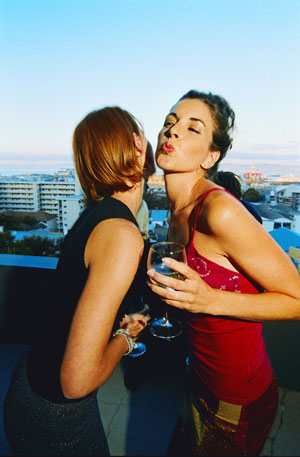Something we discussed in class was the disappearance of African Americans, or people of African origin, from Argentina over time. It is assumed that black people simply merged with other groups, especially the white Europeans. I can honestly say that I have seen very few African Americans here, other than 2 of the students on our trip. I thought it was very interesting that many of the Argentine people think that my friend Alex is Portuguese because of her skin color. She is African American and dresses nicely so many people here assume she is from Brazil. She has had to explain to several taxi drivers that she does not speak Portuguese and that she is American.
Another interesting part of the Argentina culture is religion, which I haven't fully figured out yet. Without question, Argentina is a Catholic country. However from what I have seen, it is more common for people to just identify with their religion and don't actively participate in it. This is what I have noticed at least with my host family and other people have mentioned about their host families. For example, my host mom has the apartment decorated with painting of Jesus as well as small golden jesus ornaments that hang from several door handles in her home, but she doesn't attend church frequently. I have also noticed that several taxi drivers have a cross hanging from their rear view mirrors.
One section of the Society and Culture chapter in our textbook discusses the "National Identity of Argentina." I have first hand experience with many of the things discussed in this section. Specifically, the way people greet each other here is very different than at home. Kissing each other is expected when you say both hello and goodbye. Kissing on the cheek is normal as well as a quick kiss on the lips, and the kissing noise is always made, sometimes contact isn't even made. From my personal experience, with most people, both men and women, contact is made and we kiss on the cheek. People sometimes can be "over friendly" but for the most part I personally like this aspect of their culture. At home people can be so cold, but here I always feel welcome.
Finally, the fashion really jumped out to me. I feel like I fit in here more than I do at home, at the University of Delaware because it here it is common to dress up and look nice. Fashion is a very important part of the Argentine culture, people like to look good. At home, I am often asked why I am dressed up or where I am going, while I just enjoying dressing nicely. Women were heels, skirts and dresses regularly. The outfits worn in the Tango show last night really grabbed my attention. They were all so intricate and sparkly. The Tango is the national dance here and is a dance filled with emotion.













